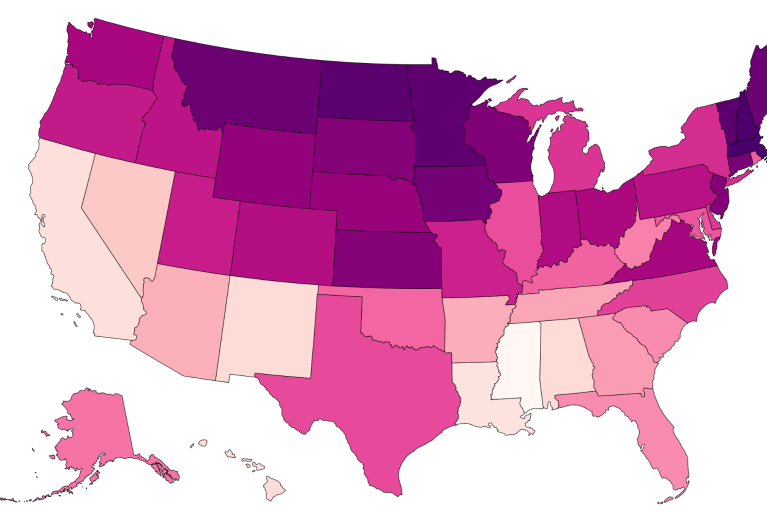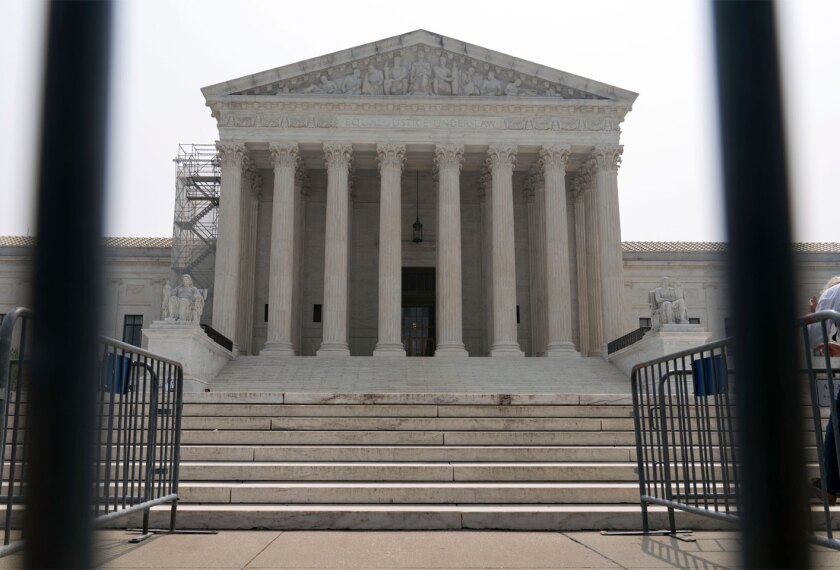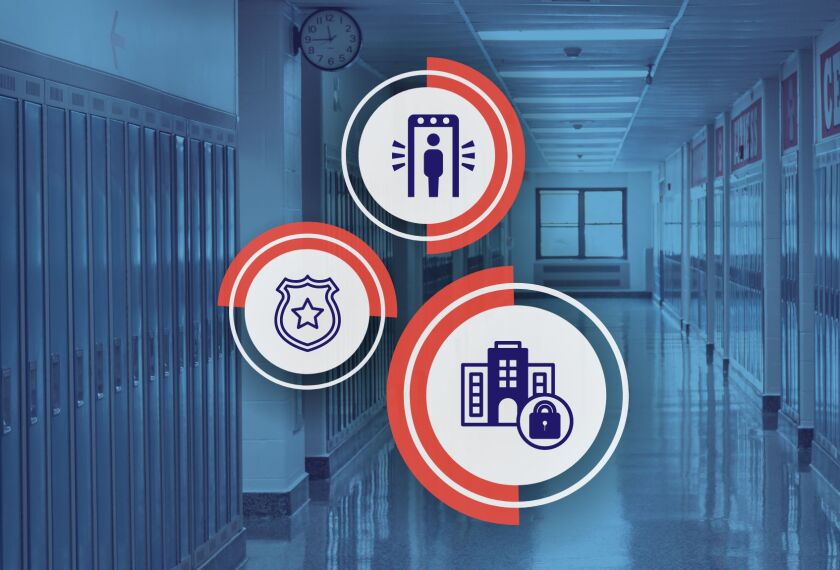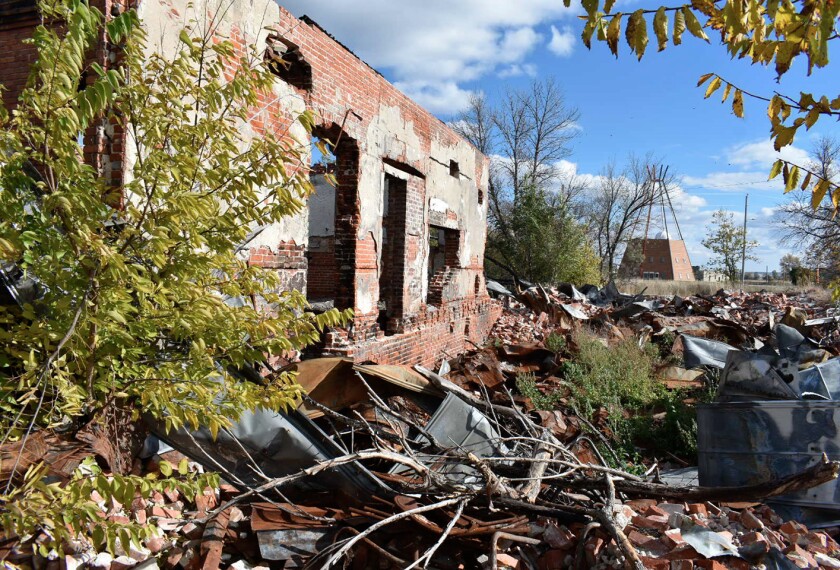There’s a prevailing narrative in the United States that crime has been on the rise, including violence among young people.
But the available data paint a more complicated picture—that of a decades-long decline in youth violence and crime that nonetheless was interrupted by a short-term spike earlier in the COVID-19 pandemic.
Still, educators every day notice the effects of a long-term worsening of adolescents’ mental health and an increase in bad behavior since school buildings reopened following pandemic closures. They also report an uptick in threats of and actual physical and verbal aggression from students.
The complicated reality points to a need for educators, health care providers, those in the criminal justice system, and others who work with young people to focus more sharply on addressing the root causes of youth crime and boosting the available mental health services that can help adolescents work through them.
That’s according to Josh Weber, director of the juvenile justice program at the Council of State Governments, who laid out three key considerations on youth crime during a July 29 webinar that could provide an important backdrop for educators as they try to address their students’ needs and foster a safe school climate where all students can learn.
“There was a moment in time during the pandemic and post-pandemic where violence spiked, but evidence suggests that that is subsiding, and so rather than overreacting to a relatively short-term data blip in violence, it’s important to really try to understand some of the root causes of that violence, and address those,” he said.
Mental health problems among young people are rising
Adolescents are increasingly struggling with their mental health and experiencing trauma in and out of their homes, Weber said. And mental health care providers and the juvenile justice system, often the destination for adolescents and teenagers with the most severe challenges, are struggling to hire and retain staff to meet the demand.
Data from the Centers for Disease Control and Prevention’s Youth Risk Behavior Survey in 2021—the first iteration since the start of the pandemic—showed 42 percent of high school students felt sad or hopeless on a regular basis in 2021, up from 26 percent in 2009. The proportion of high school students who seriously considered attempting suicide was about 22 percent in 2021, compared to about 14 percent in 2009.
The CDC survey also showed that more than half of respondents, 55 percent, reported experiencing emotional abuse by an adult in their home, and 12 percent reported physical abuse. One in 5 high school students said they had seen someone get physically attacked, stabbed, or shot in their neighborhood. More than a third reported experiencing racism.
To add to that picture, newly released data from the National Institute of Mental Health show that the rate of actual suicides among preteens, those ages 8 to 12, steadily increased each year from 2008 to 2022, bringing suicide to the fifth leading cause of death for the age group. It was the 11th leading cause from 2001 to 2007. Though boys are still more likely to die by suicide, the increase in that time was particularly pronounced among girls.
At the same time as children’s needs have risen, the systems that are supposed to support them are increasingly grappling with hiring and retention challenges, Weber said, citing a survey of juvenile corrections and probation agencies across the country conducted by the Council of State Governments Justice Center, a nonprofit and nonpartisan research organization, and others.
Eighty-five percent of respondents to that survey reported moderate to severe challenges in hiring and retaining staff, and about half said those problems have worsened in the past decade. Less than 10 percent felt their state had a plan to address the problem.
Youth arrests for violent offenses remain low
Despite more media and public attention on youth violence, arrest rates for violent offenses for children remain at or near historical lows, Weber said. Arrests of young people for offenses like assault, rape, and robbery have been at or near their lowest points in decades, Weber said, citing FBI data.
Nationally, the violent offense rate among adolescents ages 12 to 17 was 5 crimes per 1,000 juveniles in 2021, according to federal data. That wasn’t much different from 2019 and 2020. But it was 70 percent lower than the 2005 rate of 17 crimes for every 1,000 juveniles.
“Overall, this narrative that youth violence has exploded, that young people are kind of going crazy around the country in terms of violence, is not actually true,” he said.
In recent years, however, there has been a spike in homicide and weapons-related offenses among young people, he said.
He acknowledged the available data “lagged,” with the most recent report from 2022. He also acknowledged that gun-related injuries have become the leading cause of death among children.
Many children have been “pushed into the juvenile justice system, not because they’re a public safety risk,” but rather as a way to receive mental health services they wouldn’t otherwise be able to access, Weber said.
Perceptions of youth violence are influenced by local and national media coverage
It’s important for community leaders to understand that perceptions of youth violence and crime are influenced by more than high-level national data, Weber said.
Not all crimes in the community are reported, so national and local data won’t fully reflect many people’s experiences. Plus, available data are typically a few years old.
The public is also influenced by local and national media coverage and political narratives, and there has been much attention on “outlier cases with the highest-risk youth that don’t reflect the vast majority of youth,” he said.
An exaggerated emphasis on violence in news coverage can make community members feel less safe, he said.
And politicians tend to hold up “extreme cases as examples, even when they don’t represent the majority,” Weber said.
Disclaimer: The copyright of this article belongs to the original author. Reposting this article is solely for the purpose of information dissemination and does not constitute any investment advice. If there is any infringement, please contact us immediately. We will make corrections or deletions as necessary. Thank you.






